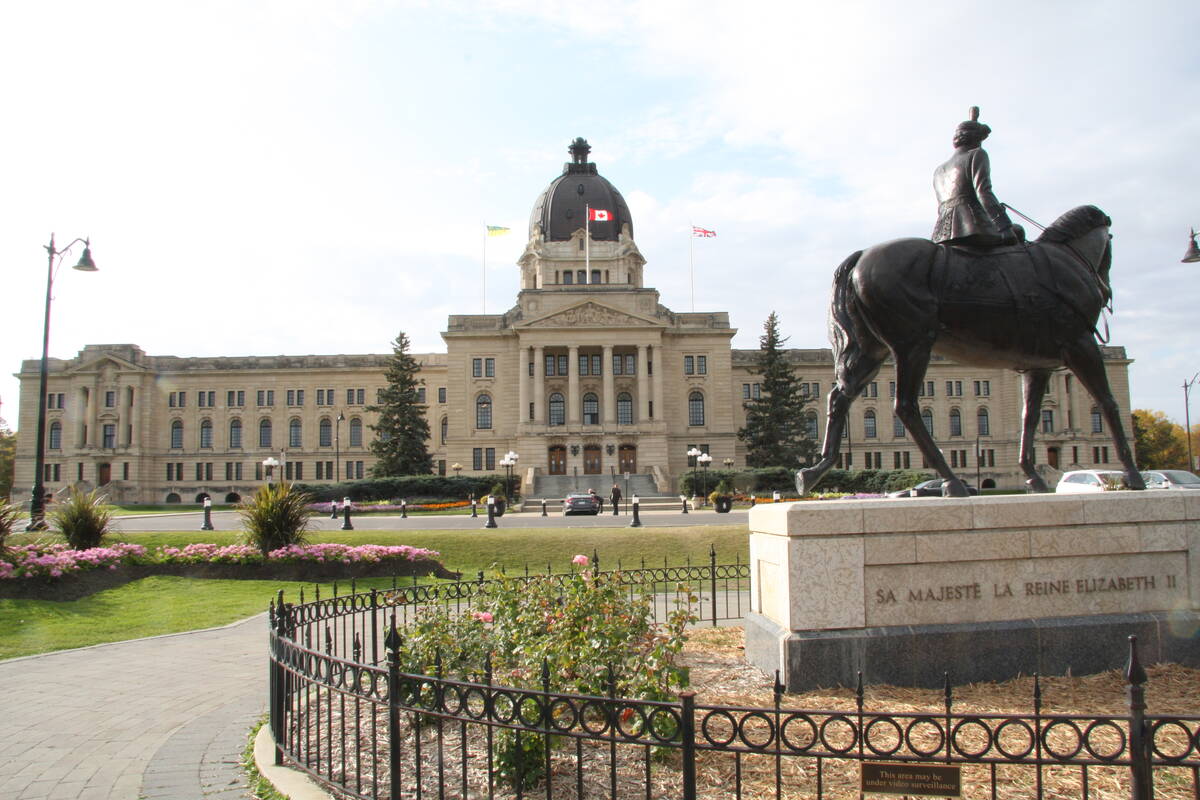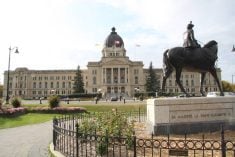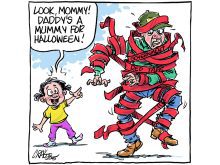The United States and European countries have record deficits and huge debts that threaten their currencies and economies.
Canada’s deficit and debt are less onerous, but nevertheless a burden.
Governments are looking for ways to slash spending and agriculture programs will be one target.
The fiscal crisis presents an opportunity and threat for agriculture.
Policy reform is usually driven by the carrot or the stick.
For years the attraction of improved trading relations through the World Trade Organization was the carrot to encourage governments to reform agricultural policies.
Read Also

Saskatchewan throne speech promises strong economy
Saskatchewan’s legislative agenda for the coming year will focus on meeting the challenges of new world trading relationships, said the speech from the throne.
That failed.
The stick of a fiscal crisis might prove more persuasive. American and European politicians are beginning to realize, as their Canadian counterparts did in the 1990s, that if they don’t get their budget in order, the people who own their debt will force them to.
In the U.S., the deficits of $1.4 trillion in 2009 and $1.3 trillion in 2010 are, when measured as a share of gross domestic product, the largest since 1945.
Citizens enduring reduced services and perhaps higher taxes will want the pain spread evenly. They won’t look kindly on reports like those in the U.S. of millionaires receiving farm support cheques, even if they are the exception not the rule.
In agriculture so far, the cuts are mostly around the edges. Big changes are possible only when farm bills are rewritten.
The U.S. will write a new five-year farm bill next year, the EU is working on a new Common Agriculture Policy for 2014 and Canada’s Growing Forward policy framework expires in 2013.
If politicians, bureaucrats and agriculture groups are smart, they will use the impetus of budget restraint to fundamentally rethink agricultural programs.
Current policies have provided some support, but are also dysfunctional. Many producers still can’t generate profits, monoculture crops are encouraged, market signals are masked, surpluses are generated in rich countries that get dumped on poor countries and yet globally, food shortages have developed.
Political courage is needed to abandon familiar but distorting policies and set out on a less costly but ultimately more rewarding path, with obstacles to profitability torn down to allow less government spending on income stabilization and more on innovation and sustain-ability.
But the crisis also presents a danger if governments cut without considering consequences.
For example, cutting all budgets by 10 percent could hurt research vital to future prosperity or damage inspection systems that ensure safe food.
The timing for a radical policy change is good. Crop farmers have the potential for strong profits if the weather co-operates, and a long and painful herd reduction has turned the market to favour livestock producers.
With better finances and a more optimistic outlook, farmers are likely more willing to participate in policy redesign.
America’s largest commodity group, the National Association of Corn Growers, has already indicated it is open to the idea of shifting direct payments into more palatable programs like crop insurance.
A recent paper by the Canadian Agri-Food Policy Institute, an independent think tank, presents an intriguing concept of redesigning food systems to reach long-term goals. The system would:
• produce safe, healthy food for Canadians and the globe’s increasing demand
• provide clear signals from markets and customer demand;
• support efficient, profitable production with good risk management;
• protect the environment;
These are worthy goals. The fiscal crisis presents an opportunity to pursue them.
Bruce Dyck, Terry Fries, Barb Glen, D’Arce McMillan and Joanne Paulson collaborate in the writing of Western Producer editorials.














